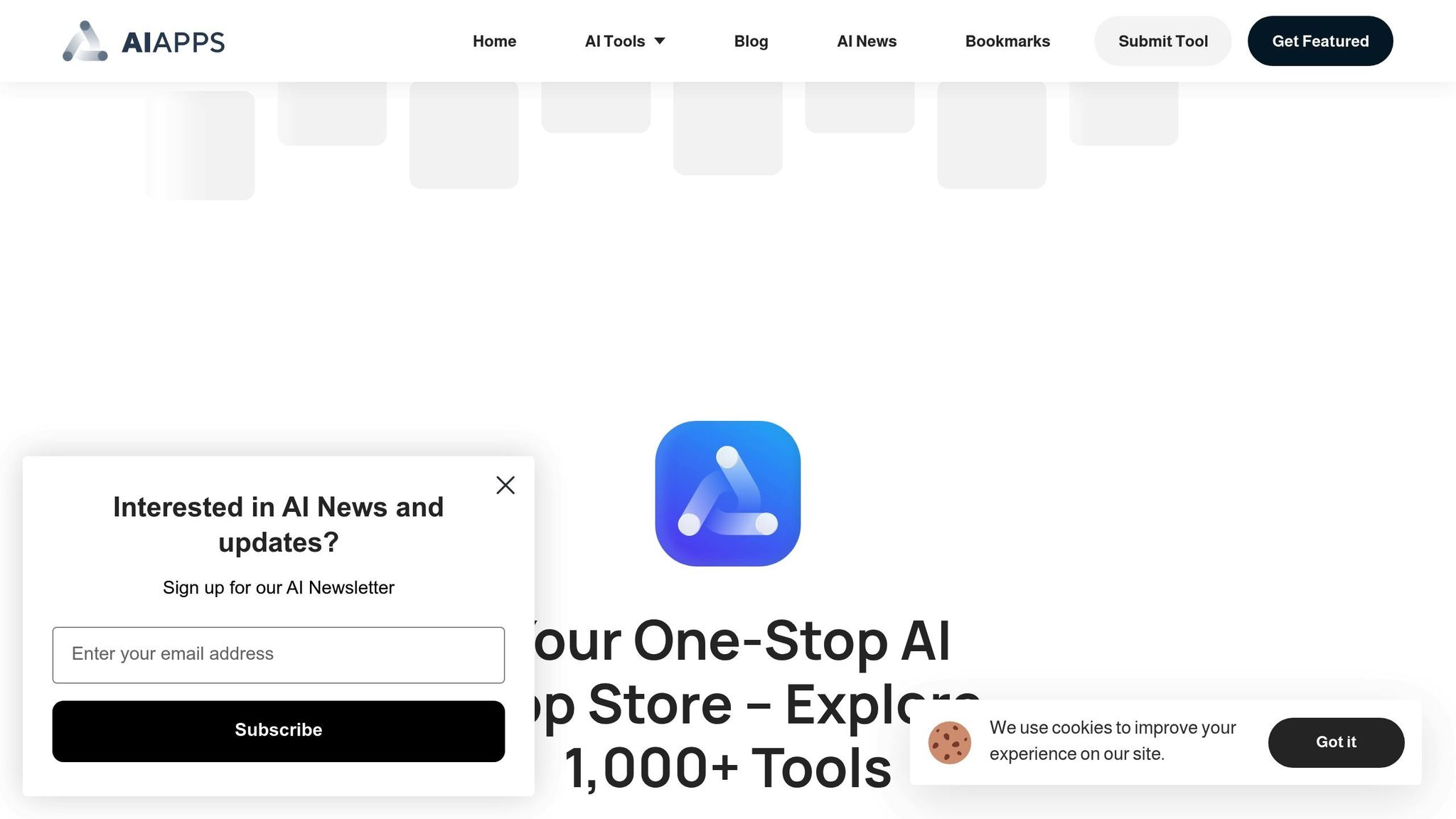AI is transforming how we predict tsunamis, offering faster and more accurate forecasts compared to older methods. By analyzing massive datasets, AI can predict tsunami size, speed, and impact zones within seconds, vastly improving emergency response times. Key methods include machine learning, deep learning, and real-time signal processing, each addressing critical challenges like data quality, false alarms, and computational speed. These advancements have already shown success in reducing prediction times from 30 minutes to fractions of a second.
Key Takeaways:
- Machine learning algorithms analyze seismic and oceanographic data, achieving mapping accuracy of up to 99.7%.
- Deep learning models create high-resolution inundation maps 90% faster than older techniques.
- Real-time signal processing uses underwater acoustic data to classify earthquakes and predict tsunami formation in seconds.
- Challenges include limited data availability, especially for large-magnitude events, and high computational demands.
AI-driven systems are improving tsunami risk assessment and emergency planning, helping save lives and minimize damage. However, expanding sensor networks and refining models remain critical for broader adoption.
Machine learning model slashes prediction time for tsunami caused flooding
Main AI Techniques Used in Tsunami Prediction
Tsunami prediction relies on three key AI techniques, each designed to tackle specific challenges in processing vast amounts of data and delivering timely, life-saving warnings.
Machine Learning Algorithms
Machine learning (ML) algorithms play a pivotal role in improving the accuracy and efficiency of tsunami forecasts by analyzing existing simulation data. Popular algorithms include regression trees, random forests, support vector machines, and neural networks.
- Regression trees are particularly valued for their simplicity and ability to explain the patterns and rules they uncover, providing critical insights for experts.
- Random forests and support vector machines excel at quickly analyzing seismic and oceanographic data to predict tsunami characteristics like wave height and arrival time.
ML models boast an impressive mapping accuracy of 85% to 99.7%, and deep learning techniques further enhance both resolution and processing speed. For instance, in 2022, Mulia et al. introduced an artificial neural network approach that processes observation station data and delivers forecasts in just 0.05 seconds, a dramatic improvement over the 30 minutes required by traditional physics-based models.
Deep Learning Models
Deep learning models complement traditional ML by generating high-resolution inundation maps essential for emergency planning. Deep Neural Networks (DNNs) can transform low-resolution tsunami simulations into detailed maps, cutting computational time by nearly 90% compared to older methods.
In 2020, Mulia et al. demonstrated how DNNs could create detailed inundation maps, enhancing their resolution and usability for evacuation planning and infrastructure design. A study in Pangandaran, Indonesia, further highlighted the power of deep learning. Using a U-Net model trained with 1,044 samples, researchers achieved outstanding results: a mean-square error (MSE) of 0.357, an intersection over union (IoU) of 0.973, and an F1 score of 0.983, all within less than 3 minutes of processing time.
Retrospective testing on the 2006 Java tsunami confirmed the accuracy of these models. A deep learning model reconstructed the reference inundation map with an MSE of 0.45, an IoU of 0.97, and an F1 score of 0.99. Another model achieved remarkable metrics, including a coefficient of determination (R²) of 0.99560, a mean absolute error (MAE) of 0.00118, and a mean absolute percentage error (MAPE) of 3% when predicting tsunami wave attenuation.
Real-Time Signal Processing
Real-time signal processing focuses on acoustic signals from underwater earthquakes, addressing the high false alarm rate - up to 75% - of traditional warning systems.
Researchers from Cardiff University and the University of California, Los Angeles have developed a system that pairs acoustic technology with AI to classify earthquakes and assess tsunami risk. Using hydrophones (underwater microphones), the system measures acoustic radiation from earthquakes, which travels faster than tsunami waves.
"Our findings show we are able to classify the type of earthquake and retrieve its main properties from acoustic signals, in near real time. These methods will complement existing technology for real-time tsunami analysis and provide another tool for experts working to detect them." - Dr. Usama Kadri, Cardiff University's School of Mathematics
AI algorithms analyze these sound signals to determine earthquake type and magnitude, accurately predicting tsunami generation in mere seconds with over 70% precision.
"Acoustic radiation travels through the water column much faster than tsunami waves. It carries information about the originating source and its pressure field can be recorded at distant locations, even thousands of kilometers away from the source." - Usama Kadri, Co-author
The GREAT (Global Real-time Early Assessment of Tsunami) software exemplifies this technology. It uses AI and analytical models to process pressure signals from hydrophones, determining earthquake magnitude and whether the strike is horizontal or vertical. For the 2004 Sumatra tsunami, this system analyzed tsunami size in under 30 seconds on a standard multicore PC.
Together, these AI techniques form a robust framework for rapid and precise tsunami prediction, offering invaluable tools for researchers and emergency planners. Platforms like AI Apps provide access to a variety of AI tools to support tsunami research and response planning.
Challenges in Using AI for Tsunami Prediction
While AI has shown promise in improving tsunami forecasting, several hurdles still stand in the way of its full potential. Tackling these issues is vital for researchers and emergency planners aiming to refine prediction systems and enhance preparedness.
Data Availability and Quality Issues
AI models thrive on high-quality, standardized datasets, but in many regions, these are either scarce or nonexistent. The lack of robust monitoring networks in certain areas makes it hard to collect the reliable data that AI algorithms need. Submarine earthquakes, which account for about 80% of tsunamis, are particularly challenging to monitor due to the high costs and technical difficulties involved. This often results in incomplete or noisy datasets that hinder the performance of predictive models.
Adding to the challenge, there is a significant data gap when it comes to large-magnitude earthquakes. These rare but catastrophic events are poorly represented in existing datasets, further complicating efforts to predict the most dangerous tsunamis.
High Computational Requirements
Real-time tsunami forecasting requires immense computational power. Simulating detailed tsunami scenarios can take so long that warnings arrive too late to be useful for evacuation efforts.
However, recent advancements offer some hope. In February 2021, researchers from Fujitsu, Tohoku University, and The University of Tokyo used the supercomputer Fugaku to create high-resolution AI models capable of handling 20,000 tsunami scenarios.
"The main advantage of our method is the speed of predictions, which is crucial for early warning. Conventional tsunami modeling provides predictions after 30 minutes, which is too late. But our model can make predictions within seconds." - Iyan Mulia, Scientist at RIKEN
These innovations have significantly improved efficiency. For instance, RIKEN's AI model can predict tsunami impacts in under one second.
Even for organizations without access to supercomputers, practical solutions exist. AI models initially trained on high-performance systems can later run on standard PCs for real-time predictions. Other strategies, such as leveraging GPUs, high-performance computing, and pre-calculated tsunami inundation databases, help reduce computational demands. Combining tsunami data with geodetic information has also proven effective in delivering faster and more accurate predictions.
Addressing these challenges will be crucial for integrating AI into tsunami forecasting systems on a broader scale. Platforms like AI Apps offer tools that can support tsunami research and emergency response planning, enabling organizations to benefit from AI without needing to build extensive infrastructure from scratch.
sbb-itb-212c9ea
Improving Tsunami Risk Assessment with AI Integration
The next generation of tsunami warning systems is all about combining AI with traditional methods. This blend helps overcome the weaknesses of each approach while amplifying their strengths. By improving prediction models and bolstering emergency responses, this integration takes tsunami preparedness to a whole new level.
Combining AI with Traditional Models
AI brings speed, precision, and broader coverage to tsunami risk assessment. It enhances Disaster Risk Reduction (DRR) systems by improving prediction accuracy and cutting response times significantly. Merging AI with traditional models fine-tunes alarm systems and minimizes risk.
For example, Deep Neural Networks (DNNs) have been a game-changer. They can convert low-resolution tsunami simulations into detailed inundation maps, slashing computational time by about 90% compared to older methods. AI also reduces forecasting time from 30 minutes to a mere 0.05 seconds. This lightning-fast processing gives emergency teams precious time to coordinate evacuations and deploy resources effectively.
"Artificial intelligence can play a prominent role in the classification of earthquake types. In combination with state-of-the-art acoustic-gravity wave technology, we can have a more reliable real-time tsunami warning system." - Bernabe Gomez, Ph.D.
AI also uses underwater hydrophone data to classify earthquake types and magnitudes in seconds, predicting tsunami events almost instantly. Acoustic-gravity waves, which travel at 1,500 m/s and can double in speed when bouncing off the ocean floor, provide crucial data for these predictions.
Applications in Emergency Response
AI-enhanced models work hand-in-hand with traditional systems to streamline emergency operations. By automating data analysis and decision-making, AI speeds up responses during critical moments.
Take Japan's Earthquake Early Warning System (EEWS), for instance. It uses real-time seismic data and AI to deliver warnings within seconds or minutes, significantly reducing casualties. AI also excels at spotting subtle warning signs that human analysts might overlook. During the 2018 Sulawesi tsunami in Indonesia, AI-based models produced rapid inundation forecasts, aiding evacuation efforts and demonstrating the technology’s real-world impact. Similarly, the Southern California Earthquake Center (SCEC) employs data analytics to model fault systems and enhance tsunami preparedness.
AI also improves coordination among response teams by quickly identifying critical needs and streamlining communication. This ensures accurate, transparent information is shared during crises, boosting public safety and trust. Predictive analytics powered by AI helps emergency managers analyze historical trends to anticipate future events more accurately, allowing for better resource allocation and evacuation planning.
The National Oceanic and Atmospheric Administration (NOAA) is expanding sensor networks to bridge the gap between seismic data and highly accurate DART buoy measurements. As Christopher Moore, deputy director of NOAA’s Center for Tsunami Research, explains:
"We're continually trying to find new sensors to slot in between the time where we have seismic information and when we have that highly accurate DART buoy information."
Platforms like AI Apps make it easier for organizations to adopt AI-driven disaster management tools without needing to build complex infrastructure. This opens the door for smaller communities and organizations to access advanced prediction capabilities previously reserved for large research institutions.
Reliable integration depends on high-quality, real-time data from seismic and oceanographic systems. Expanding offshore sensor networks, refining bathymetry data, and incorporating local knowledge are all key to improving forecasting accuracy. Cloud and distributed computing approaches also help manage the massive data loads involved. By combining AI with established methods, tsunami risk assessment becomes more effective and actionable than ever before.
Future of AI in Tsunami Prediction
AI is transforming tsunami forecasting, promising quicker and more precise predictions through better data collection, advanced modeling, and wider accessibility.
Better Data Collection Methods
High-quality data is the backbone of accurate tsunami predictions, and advancements in data collection are setting the stage for significant improvements. Modern sensor networks are evolving past traditional seismic monitoring to encompass broader environmental systems that monitor land, freshwater, and ocean conditions comprehensively.
For instance, acoustic-gravity wave technology can detect tsunami triggers like landslides or volcanic eruptions that may not produce typical seismic signals. Satellite technology is also stepping up. NASA’s use of cloud computing and deep learning to analyze satellite imagery has achieved hurricane tracking six times faster than conventional methods, allowing hourly updates instead of every six hours. Additionally, integrating multiple sensor types provides a fuller picture of ocean activity. A great example is Japan's S-net network, which delivers offshore data to AI systems that can generate forecasts in just 0.05 seconds - far quicker than the 30 minutes needed by older models.
These advancements in data accuracy and speed pave the way for the adoption of multi-model AI systems.
Multi-Model Approaches
The future of tsunami prediction lies in combining the strengths of various AI models. Instead of relying on a single model, multi-model approaches bring together different techniques to enhance accuracy and efficiency. Research led by Mulia et al. in 2020 and 2022 showed that Deep Neural Networks (DNNs) could convert low-resolution tsunami simulations into high-resolution inundation maps, cutting computational time by about 90% while maintaining accuracy rates between 85% and 99.7%.
Another example is the use of Convolutional Neural Networks (CNNs), which have achieved impressive results. In one study, CNNs produced average tsunami amplitude forecasting errors of just 0.4 meters and arrival time errors of only 48 seconds across 1,000 simulated scenarios.
Generative AI is also proving to be a game-changer. It can create realistic disaster scenarios to help authorities plan better and train emergency responders, all without real-world risks. Additionally, it can instantly translate critical information into multiple languages, ensuring that diverse communities receive life-saving updates.
These multi-model systems excel at handling complex, multi-dimensional data, adapting to changing conditions, and spotting patterns that traditional methods might miss. As Usama Kadri, a researcher at the University of Cardiff, explains:
"AI models can provide more accurate and timely warnings, reducing false alarms and improving response measures, there is no doubt about that."
Role of Platforms Like AI Apps

Beyond technical breakthroughs, making AI tools widely accessible is essential for global tsunami prediction efforts. Platforms like AI Apps are playing a vital role by offering over 1,000 curated AI tools across different categories. These platforms help researchers, emergency agencies, and communities - especially those with limited resources - integrate specialized applications for disaster prediction and response.
This accessibility is critical as climate-related disasters have tripled over the past 30 years, with adaptation costs for developing nations projected to reach $140–$300 billion annually by 2030. Platforms like AI Apps also provide real-time data access and testing environments, which are invaluable for smaller institutions and emergency responders. For instance, a collaboration between Google and Harvard developed an AI system that analyzed data from 131,000 earthquakes and aftershocks, achieving superior accuracy in predicting aftershock locations when tested on 30,000 events.
UNESCO’s initiatives to foster global cooperation and advance technology further highlight the importance of making cutting-edge tsunami models available to enhance preparedness worldwide.
With advancements in sensors, smarter AI models, and greater accessibility to tools, tsunami forecasting is becoming faster, more accurate, and more globally available. These innovations hold the potential to save lives and reduce the catastrophic effects of these natural disasters.
Conclusion
AI models are revolutionizing tsunami forecasting by delivering predictions in seconds, compared to the half-hour delays of traditional methods, while achieving accuracy rates between 85% and 99.7%. Deep Neural Networks have slashed computational times by nearly 90% without compromising precision, marking a major step forward in disaster prediction and response.
One of the most critical improvements is the reduction of false alarms, which enhances the reliability of tsunami warnings. As Dr. Katsuichiro Goda, Earth sciences professor and Canada Research Chair in Multi-Hazard Risk Assessment, explains:
"Our models show when waiting times are too short, performances of the tsunami early warning models vary significantly in terms of success. We need to continue collecting data and using multiple datasets to develop a robust tsunami early warning model for Tofino and other coastal communities on Vancouver Island."
Looking ahead, multi-model approaches are combining the strengths of various AI techniques to refine forecasts further. Platforms like AI Apps are making these tools accessible, with over 1,000 curated applications available for researchers and emergency responders. This accessibility means even smaller organizations and resource-limited communities can now incorporate advanced prediction tools into their disaster preparedness plans.
These advancements are not just technological achievements - they have the potential to save countless lives. The next challenge lies in ensuring their rapid adoption worldwide.
FAQs
How do AI models make tsunami predictions faster and more accurate than traditional methods?
AI models are transforming how we predict tsunamis by analyzing real-time earthquake data and acoustic signals to detect events that could lead to these natural disasters. Using deep learning techniques, like Long Short-Term Memory (LSTM) networks, these models can simulate wave behavior with a level of accuracy that surpasses traditional numerical methods.
With the ability to process enormous datasets almost instantly, AI delivers faster and more dependable warnings. This extra time can be crucial for communities to prepare, potentially saving countless lives. Beyond improving prediction accuracy, these advancements also refine emergency response strategies, making them more effective when every second counts.
What challenges do researchers face when using AI to predict tsunamis, and how are they overcoming them?
One significant hurdle in using AI for tsunami prediction is the lack of observation data in high-risk zones, particularly in areas with limited monitoring infrastructure. Without sufficient data, creating precise forecasting models becomes a tough task. Another challenge lies in finding the right balance between accuracy and avoiding false alarms - models that are too sensitive might trigger unnecessary warnings, while less sensitive ones could fail to detect critical events.
To tackle these issues, scientists are turning to cutting-edge acoustic technologies, like underwater sound wave detection, to collect more dependable data. They're also employing deep learning models, such as artificial neural networks, to process offshore data and predict inundation levels directly. These advancements are enhancing the speed and reliability of tsunami forecasts, offering a better chance to protect lives and reduce damage.
How does combining AI with traditional methods improve tsunami predictions and emergency responses?
Integrating AI with conventional models has transformed tsunami prediction and emergency response efforts. By analyzing vast amounts of seismic, oceanographic, and historical data in real time, AI provides faster and more precise assessments of critical factors like wave height, speed, and impact zones. This means forecasts are not only quicker but also more reliable.
AI-powered systems also excel at interpreting earthquake signals, determining their magnitude and type with remarkable speed. This capability allows authorities to issue timely warnings and coordinate evacuation plans more effectively. The combination of speed and accuracy offered by AI can make a life-saving difference, minimizing casualties and reducing property damage during tsunami events.



